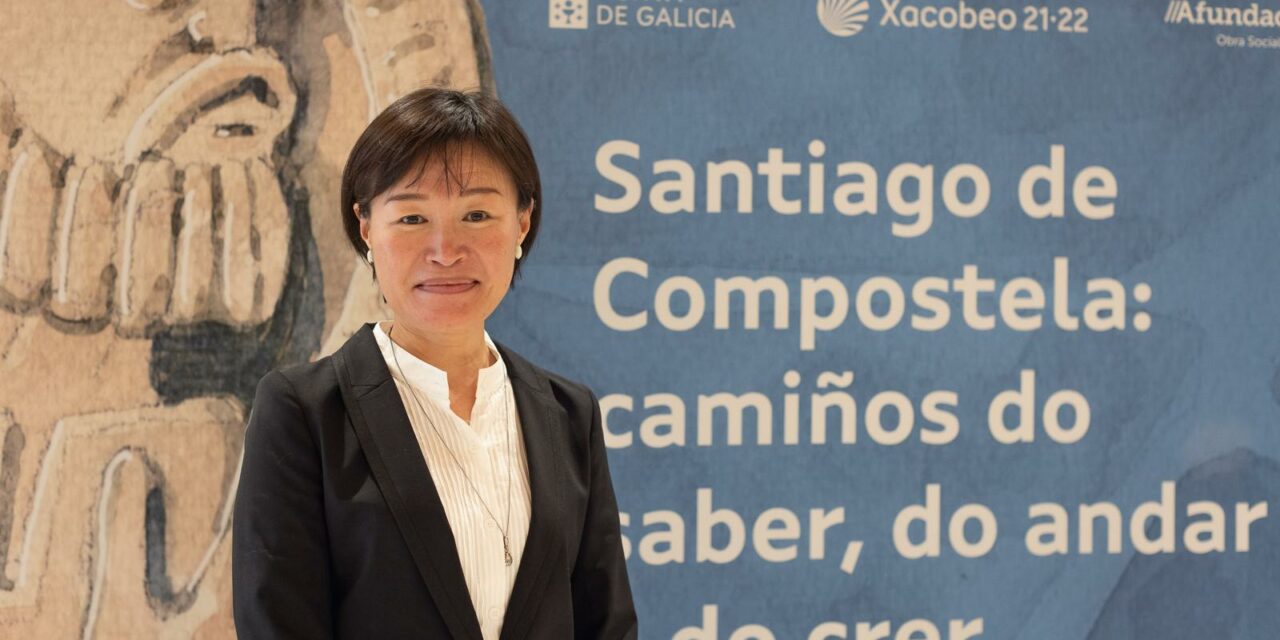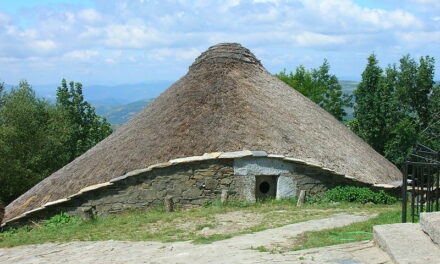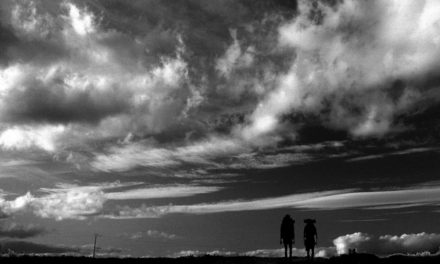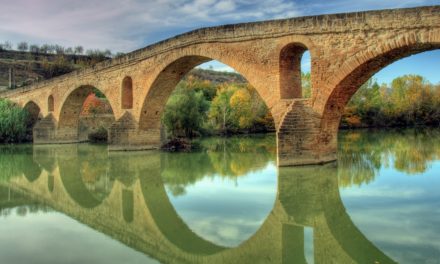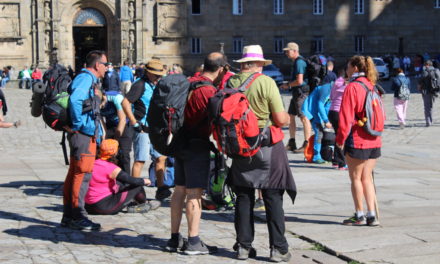When writing this essay or short reflection on Japanese pilgrims on the Camino de Santiago, I consulted the page of the Pilgrim Reception Office. This website provides us with the remarkable data of pilgrims who have completed the Camino since 2003, not only their numbers but also their profiles based on their origins, ages, means, motivations, etc. According to these statistics, 101,056 pilgrims received the Compostela in 2006, the year in which I did my first Camino de Santiago. Of them, 52,616, or more than half, were Spanish (52.03%) and there were only 286 Japanese (0.28%). In fact, along the way from Saint-Jean-Pied-de-Port to Santiago de Compostela in the month of September of the same year, I walked mostly with Spanish pilgrims, sometimes with French, German, Italian, Swiss, Belgian, Brazilian and Australian, but I did not come across any Japanese or other Asian pilgrims.
From then until the COVID-19 travel restrictions emerged in 2020, more and more Japanese pilgrims received the Compostela: The number of Japanese pilgrims increased by one hundred each year with some exceptions in 2010, 2014 and 2016 when there was an even greater increase. For example, in 2010 the number of Japanese pilgrims increased by 50%. (The number of Japanese pilgrims who received the Compostela increased from 534 in 2009 to 801 Japanese in 2010.)
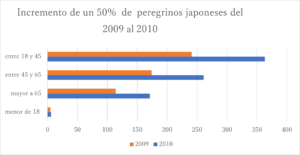
The reason why there was this significant increase could be attributed to the initiative of the Xunta de Galicia and the Xacobeo that sponsored the first and second Lessons and Practices on the Camino de Santiago for Japanese university students at the University of Santiago and IDEGA in 2008 and 2009. This program was the first USC and IDEGA on-site summer course of Camino de Santiago for Japanese university students. In the two years that the Lessons and Practices were held, a total of thirty nationally selected Japanese students, from Hokkaido University (located on the northern island of Japan) to Kyusyu University (located in the southwest island of the Japanese archipelago) walked from Astorga to Santiago de Compostela. Throughout the two weeks of the course on the Camino de Santiago, students attended classes taught by specialists on the history of the Camino, on art history and Galician geography to learn about the Jacobean pilgrimage and also the culture of the Camino through other pilgrims, hospitaleros and the local population of the Camino. In a short period of time they learned to behave like any other pilgrim and realized that doing the Camino de Santiago was much more than tourism in a foreign country. Upon returning to Japan, the students gave lectures at their respective universities, sharing their experiences of the Camino. The most effective and important promotion of the Camino de Santiago is made through the testimony of the pilgrims and it is very likely that the most important increase in the number of Japanese pilgrims in 2010 was the fruit of these Lessons and Practices on the Camino initiative, together with USC and IDEGA.
I must also mention the contribution of the Association of Friends of the Camino de Santiago in Japan, which was founded in 2008. The creation of the said association undoubtedly influenced the increase in Japanese pilgrims in 2010, especially in those people who were over 65 years of age. The result of the support offered by the association to people over 65 can be seen more clearly in the first two years of its foundation. The number of Japanese pilgrims over 65 years of age almost doubled a year after its founding: it rose from 64 in 2008 to 114 in 2009.
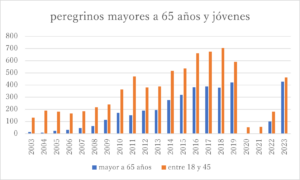
Other years in which the number of Japanese on the Camino de Santiago grew were, first of all, 2014 with an increase of 255 Japanese pilgrims (an increase of 30%) and then 2016 with 262 more Japanese (an increase of 22%). ). Thus the number of Japanese pilgrims grew until reaching 1,477 in 2018.
The recovery of the number of Japanese pilgrims after the pandemic was very rapid: 90% of pre-pandemic Japanese pilgrims was recovered in 2023. It is a fairly high number if we compare the recovery of Japanese tourists who visited Spain post-pandemic: Spain received a total of 311,555 Japanese tourists in 2023, that is, only half of the 686,091 who arrived in Spain in 2019.
The statistical data from the Pilgrim Reception Office offers information on the starting point of the pilgrimage. While the most chosen place among Spanish pilgrims for their pilgrimage since 2003 has been Sarria, it is interesting to see that until 2009 the vast majority of Japanese pilgrims preferred Saint-Jean Pied-de-Port and Roncesvalles to Sarria, but since the number of Japanese on the Jacobean Way skyrocketed in 2010, Sarria became one of the preferred starting points among the Japanese along with Saint-Jean Pied-de-Port.
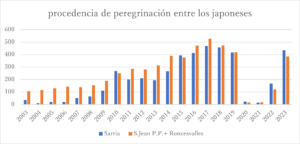
Japanese tourists normally seek urban tourism in Europe and it would not be far-fetched to assume that more and more Japanese will combine urban tourism with four or five-day Jacobean pilgrimage from Sarria. With a little luck, those who walk the Way of Saint James become a pilgrim in a few days and that experience will create an emotional bond with the Jacobean pilgrimage and will motivate them to do the Camino de Santiago again. I hope that the Japanese presence on the Camino de Santiago will keep growing.
Satoko Nakajima
Correspondent of the International Committee of Experts of the Camino de Santiago in Asia

